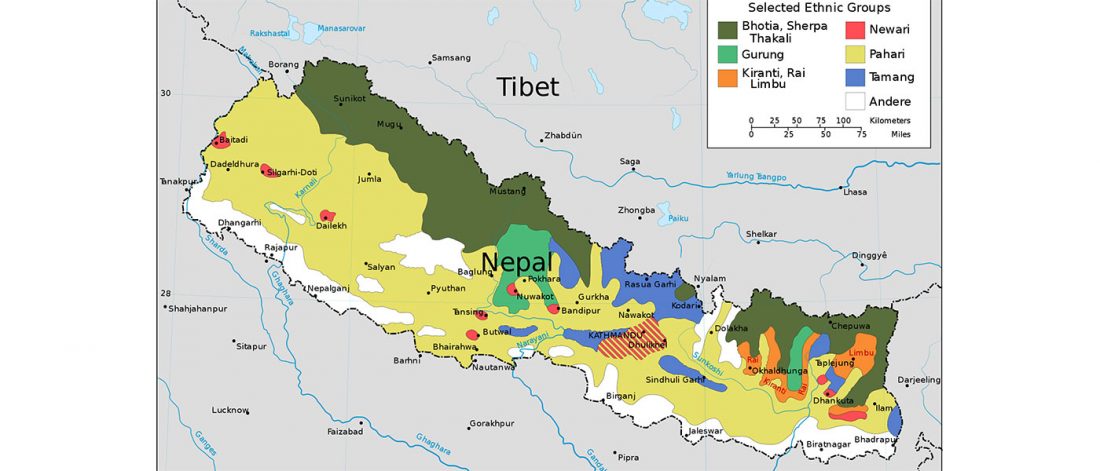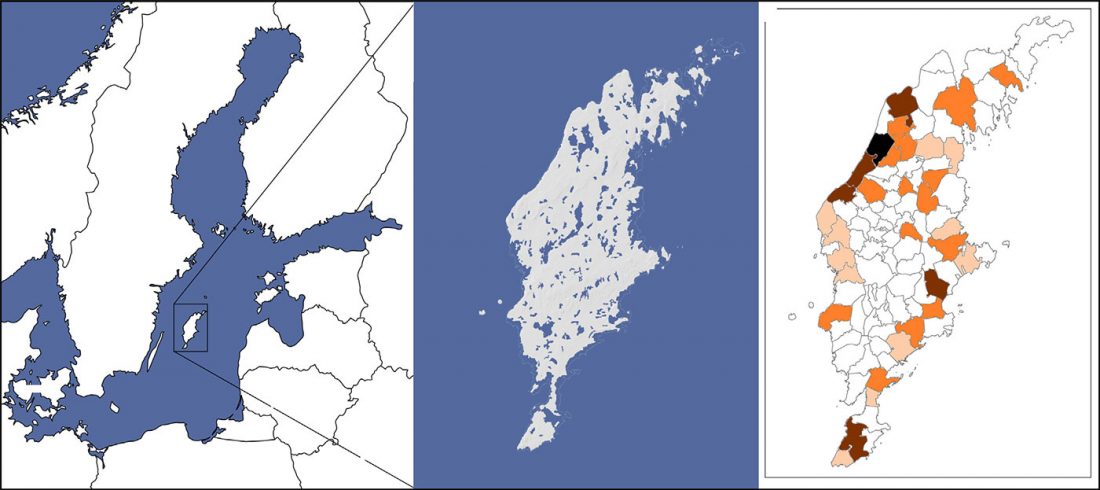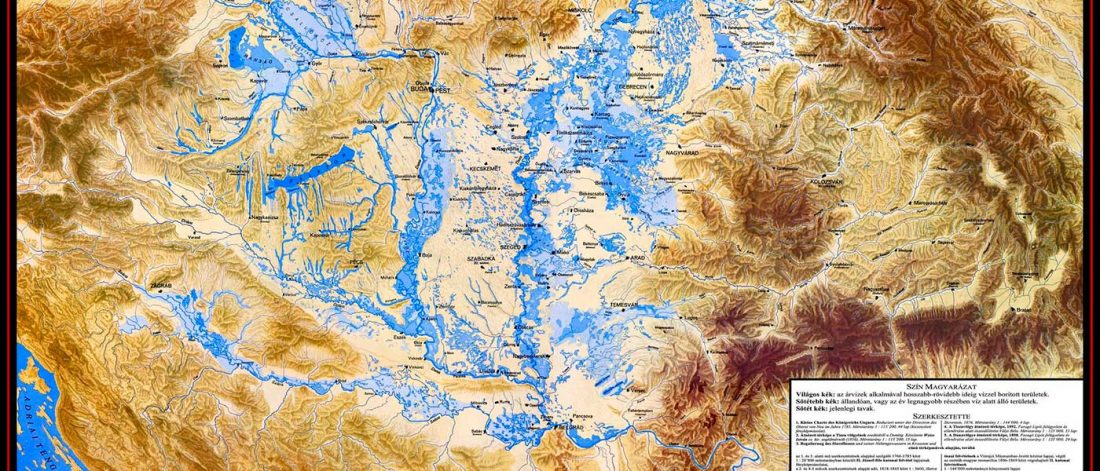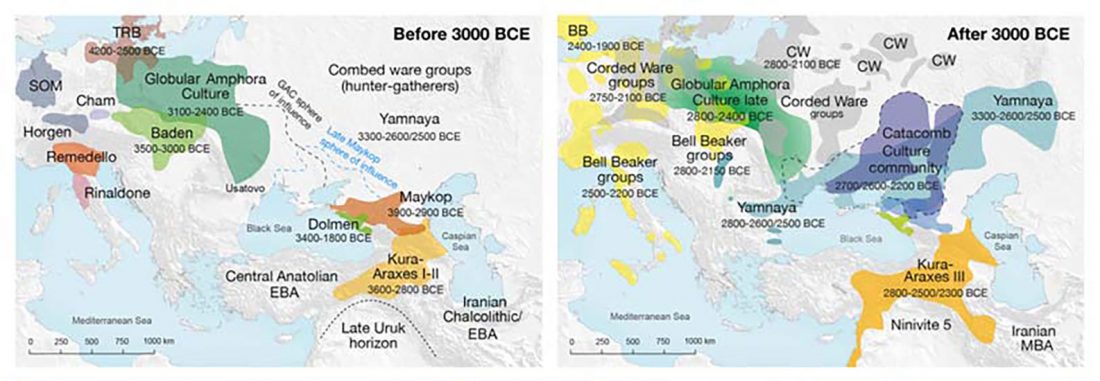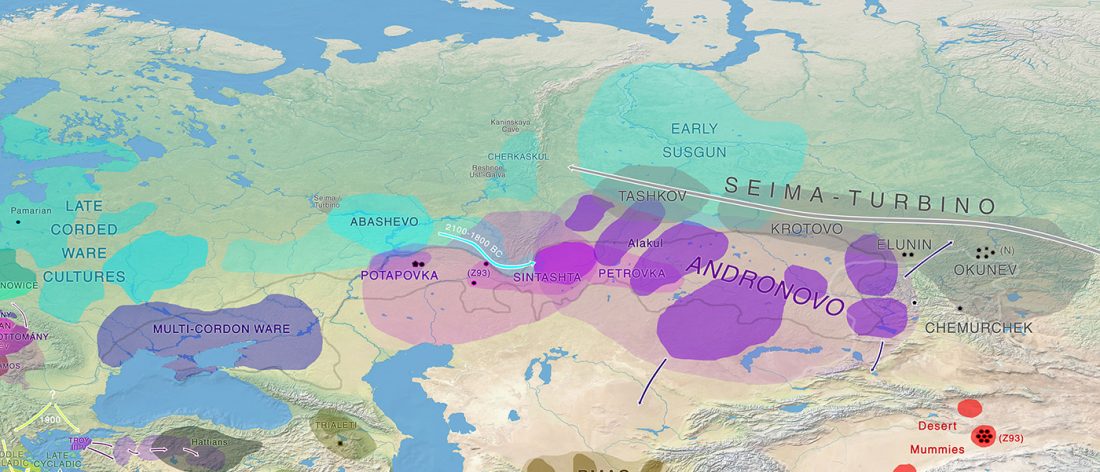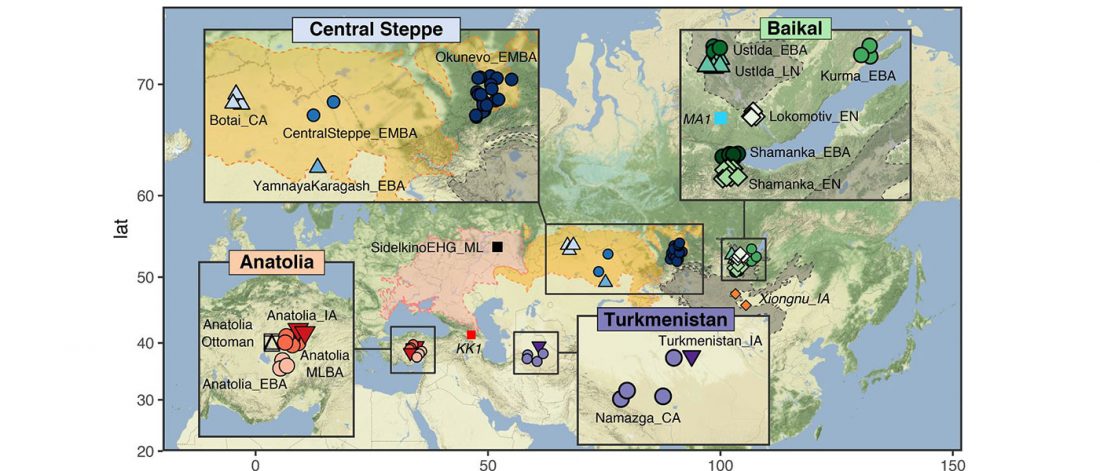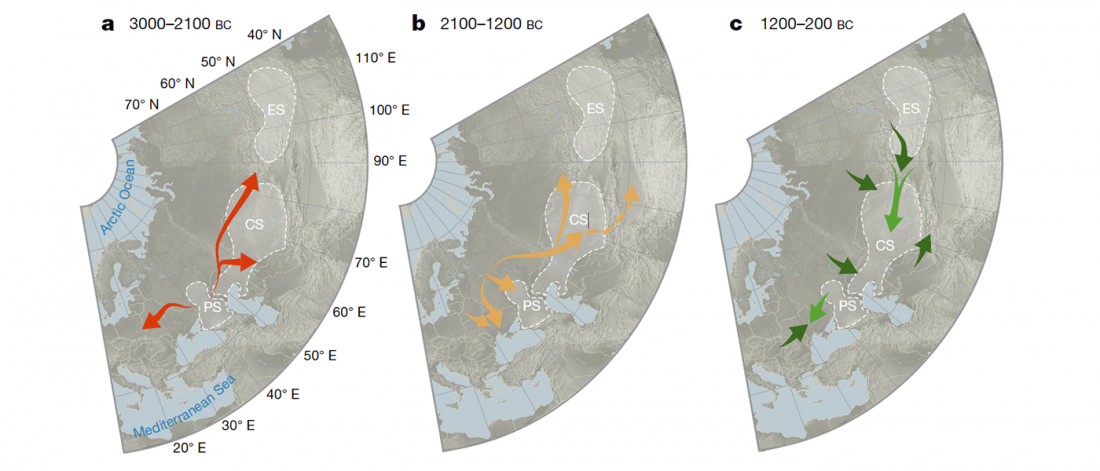This is a series of posts I wrote at the end of 2017 / beginning of 2018, to answer the wrong assumptions I could read in forums and blogs. I decided not to publish them then, seeing how many successive papers were confirming my theory in a (surprisingly) clear-cut way. Nevertheless, because I keep reading the same comments and personal attacks no matter what gets published even in mid-2018, I have decided to update and publish them. This way I will be able to respond to the “haplogroup R1a – Indo-European association” directly by pointing to any of these posts … Read the rest “Haplogroup is not language, but R1b-L23 expansion was associated with Proto-Indo-Europeans”
Open access Demographic history and genetic adaptation in the Himalayan region inferred from genome-wide SNP genotypes of 49 populations, by Arciero et al. Mol. Biol. Evol (2018), accepted manuscript (msy094).
Abstract (emphasis mine):
We genotyped 738 individuals belonging to 49 populations from Nepal, Bhutan, North India or Tibet at over 500,000 SNPs, and analysed the genotypes in the context of available worldwide population data in order to investigate the demographic history of the region and the genetic adaptations to the harsh environment. The Himalayan populations resembled other South and East Asians, but in addition displayed their own specific
…
Read the rest “Demographic history and genetic adaptation in the Himalayan region”
New paper (behind paywall) The stone cist conundrum: A multidisciplinary approach to investigate Late Neolithic/Early Bronze Age population demography on the island of Gotland, by Fraser et al. J. Archaeol. Sci. (2018) 20:324-337.
Interesting excerpts (emphasis mine):
Unfortunately, due to poor preservation, mitochondrial haplotype calls were only obtained from the EBA individuals in this study. However, some interesting findings were observed. We find two adult local individuals with unique haplogroup lineages [H1a, H1e], and two juvenile individuals with haplogroup lineages [H2a and T1a] previously found exclusively in the CWC individuals analyzed here, all four dated
…
Read the rest “Mitogenomes show discontinuity in Gotland’s LN – EBA transition”
Interesting excerpts about local Hungarian groups that had close contacts with Yamna settlers in the Carpathian Basin, from the paper Immigration and transhumance in the Early Bronze Age Carpathian Basin: the occupants of a kurgan, by Gerling, Bánffy, Dani, Köhler, Kulcsár, Pike, Szeverényi & Heyd, Antiquity (2012) 86(334):1097-1111.
The most interesting of the local people is the occupant of grave 12, which is the earliest grave in the kurgan and the main statistical range of its radiocarbon date clearly predates the arrival of the western Yamnaya groups c. 3000 BC. This is also confirmed by the burial rite,
…
Read the rest “Immigration and transhumance in the Early Bronze Age Carpathian Basin”
Open access The genetic prehistory of the Greater Caucasus, by Wang et al. bioRxiv (2018).
The Caucasus Mountains as a prehistoric barrier
I think the essential message we can extract from the paper is that the Caucasus was a long-lasting cultural and genetic barrier, although (obviously) it was not insurmontable.
Our results show that at the time of the eponymous grave mound of Maykop, the North Caucasus piedmont region was genetically connected to the south. Even without direct ancient DNA data from northern Mesopotamia, the new genetic evidence suggests an increased assimilation of Chalcolithic individuals from Iran, Anatolia
…
Read the rest “The Caucasus a genetic and cultural barrier; Yamna dominated by R1b-M269; Yamna settlers in Hungary cluster with Yamna”
Interesting recent papers on Sintashta and related Volga-Ural MLBA communities, with relevant excerpts (emphasis mine):
Social Organization of the Sintashta-Petrovka Groups of the Late Bronze Age and a Cause for Origin of Social Elites (Based on Materials of the Settlement of Kamenny Ambar), by Chechushkov et al. Stratum Plus (2018) Nº2.
Abstract (official, in English):
The formation of social complexity often unfolded in non-unilineal ways in those regions of the world where the surplus product remained low enough to support institutionalized power and state bureaucracy. The Bronze Age of Northern Eurasia is a vivid example where social complexity arose
…
Read the rest “Sintashta-Petrovka and Potapovka cultures, and the cause of the Steppe EMBA – MLBA differences”
The Indo-Iranian – Finno-Ugric connection
On the linguistic aspect, this is what the Copenhagen group had to say (in the linguistic supplement) based on Kuz’mina (2001):
(…) a northern connection is suggested by contacts between the Indo-Iranian and the Finno-Ugric languages. Speakers of the Finno-Ugric family, whose antecedent is commonly sought in the vicinity of the Ural Mountains, followed an east-to-west trajectory through the forest zone north and directly adjacent to the steppes, producing languages across to the Baltic Sea. In the languages that split off along this trajectory, loanwords from various stages in the development of the
…
Read the rest “Consequences of Damgaard et al. 2018 (III): Proto-Finno-Ugric & Proto-Indo-Iranian in the North Caspian region”
Another, simultaneous paper with the Eurasian samples from Nature, The first horse herders and the impact of early Bronze Age steppe expansions into Asia, by de Barros Damgaard et al., Science (2018).
A lot of interesting data, I will try to analyse its main implications, if only superficially, in sections.
Anatolian samples
Anatolia_EBA from Ovaören, and Anatolia_MLBA (this including Assyrian and Old Hittite samples), all from Kalehöyük, show almost no change in Y-DNA lineages (three samples J2a, one G2a), and therefore an origin of these people in common with CHG and Iranian Neolithic populations is likely. No EHG ancestry … Read the rest “No large-scale steppe migration into Anatolia; early Yamna migrations and MLBA brought LPIE dialects in Asia”
The expected study of Eurasian samples is out (behind paywall): 137 ancient human genomes from across the Eurasian steppes, by de Barros Damgaard et al. Nature (2018).
Dicussion (emphasis mine):
Our findings fit well with current insights from the historical linguistics of this region (Supplementary Information section 2). The steppes were probably largely Iranian-speaking in the first and second millennia bc. This is supported by the split of the Indo-Iranian linguistic branch into Iranian and Indian33, the distribution of the Iranian languages, and the preservation of Old Iranian loanwords in Tocharian34. The wide distribution of
…
Read the rest “Eurasian steppe dominated by Iranian peoples, Indo-Iranian expanded from East Yamna”

